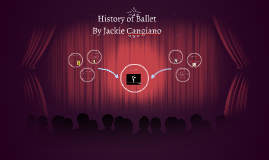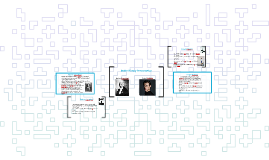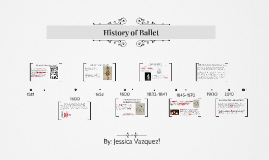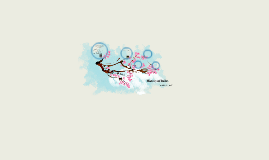History of Ballet
Transcript: Court ballets had predominantly Greek mythology themes and included a combination of dramatic spoken or sung dialog, music, and arranged court dances. 1800 From colonial times through the end of the 19th century, ballet dancers and choreographer found adventure and some even found fortune either through visiting or relocating to the United States. Beginning in colonial times, English theatrical companies toured major eastern coastal cities to perform. By the early 19th century, most cities east of the Mississippi River had an opera house, a theater, other hall for circuses, concerts or theatrical productions. As the boundaries of the United States moved westward, so did theatrical entrepreneurs. 1581 1845-1870 By: Jessica Vazquez! King Louis XIV of France was a dancer, producer of more than 1,000 ballets, and patron of the arts as this picture: Marie Taglioni an Italian dancer who was trained by her father, embodied the ethereal side of romanticism. Her role as the sylph in the La Sylphide (1832) made her a star. Romantic Ballets When Catherine de' Medici moved to France she brought Italian amusements and entertainments. In 1581 the queen commanded Balthasar de Beaujoyeulx, an Italian violinist at court, to produce an extravagant entertainment. Le Ballet-Comique de la Reine, which has since become considered the first ballet. 2010 1653 La Sylphide (1832) Filippo Taglioni choreographed this ballet to showcase his daughter, Marie. It ushered in the era of romantic ballet at the Paris Opera. Giselle (1841) Act I opens in a tiny Gothic village, sometime in the distant past. Giselle, an innocent peasant girl, falls in love with Albrecht, a nobleman disguised as a peasant. Forms of Ballet Entertainment! Ballet at the French Court! Of the many romantic ballets choreographed, only a few survive today. Coppelia (1870) during much of the mid-19th century, Europe was plagued with political upheaval and economic events that brought with it a new sense of reality in people's lives and on the stage, too. The ballet Coppelia acts as a bridge from romantic to classical ballet. 1600 The Pas de Quatre showcased the four divinities of romantic ballet. History of Ballet Romantic Dancers and Choreographers 1900 A CENTURY OF CONTRAST: romanticism to classicism! During the 16th and 17th centuries various forms of ballet entertainment appeared that used the steps from court dances. These amusements at court required large halls or ballrooms for dancing. - Ballet Masquerade - Ballet Pastorale - Ballet Melodramatique - Ballet Comique - Ballet de court BALLET IN THE 20TH CENTURY 1832-1841 Italian Ballet Moves to France! At the turn of the 20th century, classical ballet produced by the Russian Imperial Theatre began to change as the next generations of choreographers and dancers claimed center stage as innovators with new directions. In the first decade of the 20th century, while the Imperial Theatres continued to produce classical ballets, Sergei Diaghilev, an entrepreneur and theater director. Pas de Quatre (1845) the director of His Majesty's Theatre in London persuaded the so-called four divinities of romantic ballet, Marie Taglioni, Carlotta Grisi, Fanny Cerrito, and Lucile Grahn, to perfom in a ballet. Ballet In the United States Before 1900

















